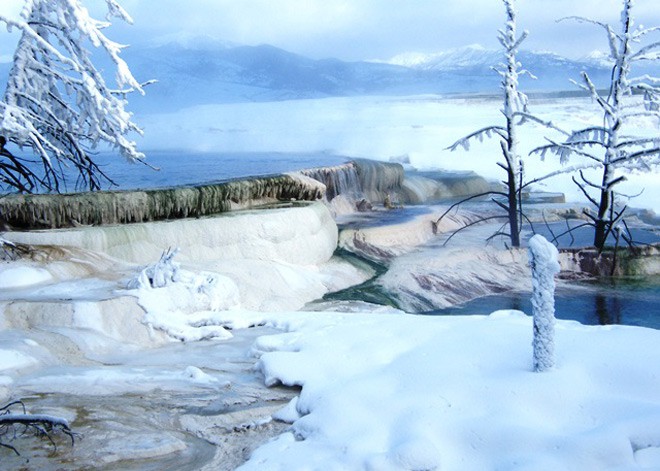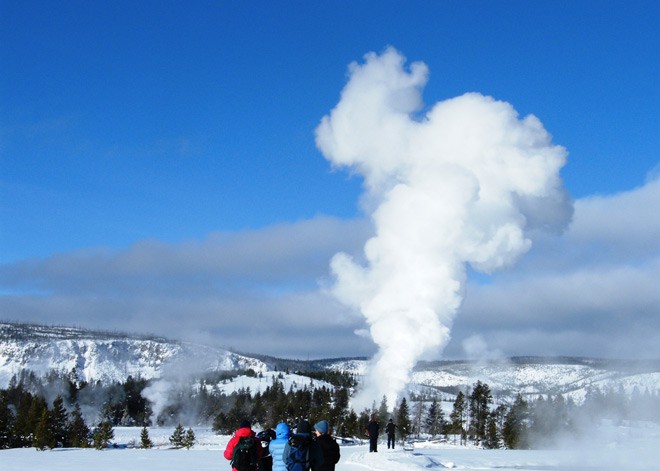Winter adventures are some of my favorite trips. Here are a few tricks I’ve learned over the years.
1. Plan for an extra day at the start of your trip. If traveling by plane, consider planning to arrive at least one day in advance of your park visit. While this advice will help travelers feel refreshed at the start of a trip during any season, I find this suggestion especially beneficial in the winter. Arranging an extra day at the front end of the trip means you have built-in flexibility for weather delays in your hometown, connecting airport, or destination, and helps account for adverse road conditions for visitors traveling by car.
2. Get to know the gateway community. Whether traveling through a town before entering a national park, filling up at the local gas station, or staying at a hotel in the neighboring community, I love striking up conversations with the people who live and work in these gateways to our national parks. Not only might locals know the best place for a slice of pizza or the best deal on a good cup of hot chocolate, but they also often know little-known facts (read: fascinating stories) about the park in their backyard. These conversations are particularly useful in winter because area residents will know of adjusted hours or seasonal closures during the “quiet season.”
3. Don’t be afraid to try something new. You may be planning a trip to a national park around a favorite cold-weather activity, like cross-country skiing in Acadia, snowshoeing in Yellowstone, or downhill skiing in Yosemite. You can make it a multi-sport vacation by renting equipment from a local gear shop or even from concessioners inside the park. Now there’s no need to lug bulky equipment on your next park holiday, and no more “lack of equipment” excuses holding you back. So pack your winter layers and get out there to give it a shot.
4. Drink plenty of water. Staying hydrated is just as important in the wintertime as in the summer, but our bodies don’t let us know we are dehydrated in quite the same way, and we may not always recognize we’re thirsty during cold-weather activities. My favorite winter trick is to drink warm water from an insulated thermos. I’m channeling my mother here when I remind us all to, “Hydrate, hydrate, hydrate!”
5. Don’t get caught in the dark. We all know that winter brings shorter days. These precious daylight hours can be even more compressed when traveling, especially closer to the poles. Another important factor is where a park is located within a given time zone. Visiting a park in the eastern part of a specific time zone will mean earlier sunrise and sunset times than other parks in the same zone. For example, the sunrise and sunset will be much earlier tomorrow at Acadia National Park (6:51 a.m. and 3:54 p.m., respectively) than Sleeping Bear Dunes National Seashore (8:01 a.m. and 5:03 p.m., respectively) because Acadia is located much farther east in the time zone. Checking daylight hours ahead of time can help ensure you will have enough daylight hours for your intended daily activities, and that you won’t get surprised as darkness falls.
These are just a few things to keep in mind during a cold-weather journey. Got your own tips? Share them with us below!
About the author
-
 Katie Eucker Former senior manager for Member Travel & Corporate Marketing
Katie Eucker Former senior manager for Member Travel & Corporate Marketing



